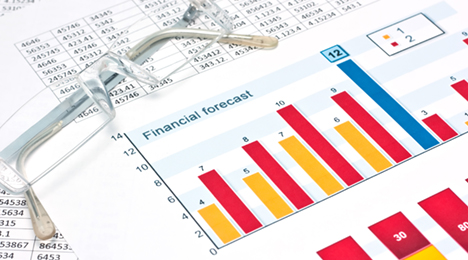Leasing Tracks Toward Middle

In a recent post to the AutoEconomy trends section of Edmunds.com, Lacey Plache — the site’s chief economist — dispels some of the commonly held notions about leasing, and in doing so, illustrates how it has gone “mainstream,” as the title of the post would indicate.
And it’s likely to become even more popular in 2014, which could lead to an ironic twist, Plache points out.
“While current leasing popularity is expected to continue in the coming months, its very success could later prove to be its undoing. Growing lease returns are combining with more trade-ins from higher new-car sales to rebuild used-car inventories,” she said in the post, titled “AutoEconomy Trends: Leasing Goes Mainstream.”
“This inventory growth will put downward pressure on used-car prices, which in turn will lower residuals and raise monthly lease payments,” Plache added. “Monthly lease payments could also increase due to rising interest rates from changes in Federal Reserve programs that have kept rates low.”
Aside from what the future may hold, data from Edmunds and others suggests there have been changes in the leasing market, some that have moved people towards the segment. And as it stands, leasing has never been more popular.
Plache indicates that the 23 percent of new-vehicle sales that leases represented last year was an all-time high.
Similarly, Experian Automotive — measuring lease penetration as the percent of all new-vehicle financing — also spotted a leasing record recently. The firm said that during the fourth quarter, the share of new vehicles financed with a lease reached its highest level since the company began publically reporting the data in 2006.
More specifically, Experian’s State of the Automotive Finance Market report indicated that 28.4 percent of all new vehicles financed were leases in Q4 2013, up from 24.8 percent the previous year.
As a percent of all new-vehicle sales, lease penetration was at 24.2 percent in Q4, Experian said, up from 20.3 percent a year earlier.
Looking to 2014, Plache suggests that market conditions are likely to result in leasing remaining popular.
“Continued economic improvement will mean more car shoppers feel confident enough to lease. And, the recent shifts in the leasing landscape reveal a larger and more diverse group of car shoppers now interested in leasing,” she said in the report, which can be found here. “The increased consumer interest in leasing will be further encouraged by monthly lease payments which are currently quite competitive, thanks to strong residuals and low lease interest rates.”
Analysis from Experian’s report on the most recently completed quarter echoed a similar theme, touching on the financial proposition that leasing has offered customers.
“Leasing continues to grow in popularity among car shoppers, especially those hoping to stay within a strict monthly budget,” said Melinda Zabritski, senior director of automotive credit for Experian Automotive. “Our analysis this quarter showed that the average monthly lease payment was $51 lower than the average loan payment, which can make a big difference to consumers trying to stretch their dollar.”
To be exact, Experian discovered the average monthly payment for a new-model loan came in at $471 in Q4, while the monthly commitment to a new-vehicle lease came in at $420.
That ties into another point Plache makes to disprove common notions about the segment: leasing goes beyond wealthy or aspirational buyers.
“Another commonly held view of leasing is that it appeals more to wealthy buyers who can afford a new car every few years and to aspirational buyers who want more car for their dollar,” Place said in the post. “Not surprisingly, lessees tend to be younger (under 45 years old) and have higher annual household income (over $75,000 and especially over $150,000) compared to the typical buyer.
“Recently, though, these patterns have shown signs of change. Leasing has become more common among older buyers (over 65 years old) and buyers with household income under $100,000 per year,” she added.
Delving into addtional payment figures and credit score trends, Experian found that the average credit score for a new-car lessee in the fourth quarter was 719, down from 735 in Q4 2012. The company also showed how leasing is distributed across the credit score spectrum in Q4:
— 44.2 percent went to super-prime customers, versus 51.3 percent a year earlier
— 23.9 percent went to prime customers, against 18.8 percent in Q4 2012
— 20.5 percent went to non-prime customers, against 18.5 percent a year earlier
— 8.9 percent went to subprime customers, versus 9.5 percent in Q4 2012
— 2.5 percent was for deep subprime customers, compared to 1.9 percent in the year-ago period.
The average monthly payment on a new-vehicle lease was $420 in the fourth quarter, down from $426 a year prior, according to Experian.
Some leasing payments far below those amounts were spotted this month by Swapalease.com, which released what it called “5 Great Car Lease Deals In March” on Tuesday.
The site listed the following deals found by Swapalease editors for March:
— Smart Car Pure Coupe: $99/month, $1,393 due at signing.
— Nissan Versa Sedan: $129/month, $1,999 due at signing.
—Chevy Cruze: $149/month, $1,629 due at signing.
— Volkswagen Jetta: $149 per month for 36 months with $2,349 due at signing.
— Kia Rio: $159/month, $1,999 due at signing.
Editor's Note: Stay tuned to Auto Remarketing for additional leasing insights from Edmunds.com, Experian Automotive and others.

 View The Latest Edition
View The Latest Edition

